Yellowstone Wolves
In 1995, Gray wolves from Alberta,  and from British Columbia in 1996, were translocated to Yellowstone National Park to restore a wolf population there. This is a glimpse of several wolves whose behavior caught the attention of Doug Smith, wolf project leader, and biological technician, Rick McIntyre.
and from British Columbia in 1996, were translocated to Yellowstone National Park to restore a wolf population there. This is a glimpse of several wolves whose behavior caught the attention of Doug Smith, wolf project leader, and biological technician, Rick McIntyre.
One way we can identify radio-collared wolves is by noting their sex, M or F, and the numbers assigned to their radios, such as F42. Alpha wolves are generally the leaders and principal breeders in their packs. Packs are usually named for where they live. For instance, Rose Creek.
Wolf M10 was big. He weighed 122 pounds when he was captured in Alberta in January 1995. M10 was also a wolf with an attitude. When crews brought food to his acclimation pen, he was one of very few wolves who stood and watched, instead of dithering back and forth along the back fence of the pen. He was placed in the Rose Creek pen with a female from another pack, F9, and her daughter, F7, in hopes that the adults would mate and begin a pack. Indeed they did.

As March 1995 came to an end, it was time to release M10 and the other two wolves from the Rose Creek pen. The door was locked open, and two days passed. The wolves’ radio signals were still coming from the pen area. Then project leader, Mike Phillips, and biologist, Doug Smith, decided to cut a hole in the back of the pen to encourage the wolves to leave. But when they approached the pen in a blizzard, dragging a deer carcass, they were startled by a loud howl from behind them. It was M10. Doug wrote, “His head high, he howled again, with the snow and wind blowing through his fur. Chills shivered down my spine. It was a magnificent and significant sight. The first wild wolf released in Yellowstone....For twenty-five minutes he followed us at a distance as we headed back. This was rare wolf behavior to be sure, but #10 was no ordinary wolf.”
Wolves, F9 and M10, captured from different Canadian packs, were simply thrown together in the same pen for 10 weeks, and made the most of it. A tragedy of Shakespearean proportions struck when big M10 was illegally killed just four weeks after his release. His new mate, F9, whelped eight pups under a spruce tree near Red Lodge the same day. A dramatic rescue followed, and the lone mother and pups were returned to the Rose Creek pen until mid-October, when the pups were old enough to escape harm.
Then, as the Bard might say, love triumphed when M8, the smallest male wolf in the park, appeared just as F9 and her pups were freed, and instantly became the Rose Creek Alpha male, adopting M101’s pups. He and F9 produced pups for four more seasons, from 1996 to 1999. By 1999, genetic analyses showed that 79 percent of the Yellowstone wolves alive then were descended from F9. After she was driven out of the Rose Creek pack, she started another pack east of the park. Her radio signal went silent in the spring of 2001. F9 qualifies as the matriarch of the Yellowstone wolf population.
Shakespeare could not have constructed more intriguing scenarios than those that wolves have acted out in Yellowstone in their widely various quests to become pack leaders and breeders amongst the other Montana wildlife.

Yearling wolf F7 did it in classic style: Released from the Rose Creek pen in late March of 1995, she split from her mother, F9, and F9’s new mate, M10, and settled into the Blacktail Deer Plateau area 20 miles west of Rose Creek, all alone. Nine months later, Doug heard radio signals from F7’s collar very close to those from Crystal Creek M2’s collar. I said, “They’re sweeties. They’ll be mates come spring.” Sure enough, they were. As the first pack formed in the wild in Yellowstone in 70 years, they were designated the Leopold pack, in honor of Aldo Leopold, whose suggestion to restore wolves to the park was published 50 years earlier.
Again, Leopold Alpha F7’s mode of dispersing, finding a mate, and occupying an empty territory is the classic one. She and M2, in an optimal elk winter range, produced seven litters over as many years, totaling 39 pups, of which 29 survived to become yearlings. Their tiny territory remained stable for years, as did the size of their pack: 11 to 14. Doug observed that F7, although a large wolf, treated other members of her pack gently.
As F7 and M2 did, Yellowstone wolves have formed a number of new packs by the traditional means. But a newly observed, quite successful strategy was seen when the Agate Creek pack formed. Chief Joseph pack disperser. M113, attracted three Druid Peak pack females, and then two more males joined them. Six adults were then in place to defend their new territory, instead of the traditional pair.
The Druid Peak pack, meanwhile, has played out an intense drama: tragic loss, suppression, ejection, reconciliation, (sorry, no incest), jealous rage, and murder, all recorded by Rick McIntyre and Doug Smith.
The Druid Peak pack, captured in British Columbia and released from the Rose Creek pen in 1996, contained a number of exceptional wolves. Alpha M38 broke out of his shipping container on the way to Yellowstone. He and another male were killed illegally in November 1997. Alpha F39 left and periodically returned to the pack. During her absence, her assertive daughter, F40, became the Alpha female, and maintained her position when F39 returned. F40 was characterized as “The Iron Lady” in Bob Landis’ 2000 motion picture. F40 was constantly suppressing her sister, F42, who did her best to show submission to her domineering sister.

“Beautiful but violent” was the way F40 was described in Landis’ 2003 National Geographic film. She had a well-deserved reputation for killing neighboring wolves and coyotes. Within about a week after F40 lost her mate, M38 (her pack was suddenly without a breeding male), M21 from the Rose Creek pack (M10’s son) appeared to the Druids, and, in a six-hour drama, was accepted into the pack as the new Alpha male. The (never before seen) event was filmed at short range by Landis and shared with the world through his 2003 film. M21 was the leader of the Druid Peak pack from late 1997, when he adopted M38’s pups, until his quiet death in 2004.
Druid Alpha, M21, shared a trait with his adopted father, Rose Creek’s M8, in that both of them defeated rival males in border fights, but refrained from killing them. Both these males also allowed other males in their packs to lead sometimes in hunting and traveling. Both wolves also adopted pups sired by other males when they joined new packs, and M21 reared interloper M302’s pups.
Back to Druid Peak Alpha F40. She engaged in a lifetime of violent suppression of her sisters, daughters, and nieces. Her aggression first caused her mother F39 and sister F41 to leave the pack. Her sister, F42, stoically endured continuing domination by F40. All this violence came to an end when F42 and her daughter, F105, apparently killed “queen,” F40, and her niece, F103.
In brief, here’s how it unfolded. In February of 2000, Alpha M21 was observed breeding with females 40, 42, and 106. Rick and Doug assumed he also bred F103 and F105. When he mated with F42 and F106, Alpha F40 was nearby, but did not intervene. However, in the weeks after F42 was bred, F40 attacked her repeatedly.
By late March, F42 denned four miles west of F40’s den. F42’s daughter, F105, and niece, F103, joined her, and avoided F40. Rick and Doug wrote, “On May 1, we began to see pups at 42’s den....40 and 106 probably also had pups at their dens. On the evening of May 7, 42, and 105 left their den and traveled east toward Chalcedony Creek on a hunt. Wolf 103 stayed behind.”
Then, “At about the same time, 40 left her den, and with M21, also headed toward Chalcedony Creek. The two subgroups met and 40 immediately attacked 42, much more severely than usual. Wolf 42 rolled on her back and accepted the bites. When 40 was finished, she did the same to 105. After that, all four wolves moved west toward 42’s den....We found 40 badly wounded the next morning....The other Druid females were the likely cause of her death. We think that 40 followed 42 back to her den and probably attacked her again or her pups....Our best guess is that 42 fought back....Possibly 103 and 105 helped attack 40.”
“Queen” F40 dead, Alpha M21 tended the pups at F40’s den, and, “A few days later, he traveled to 42’s den. She followed him back to 40’s den, then, one by one, carried all of her pups to that site. Wolf 106 also moved her pups to 40’s den....We have seen a total of 21 pups at that den!”
In contrast to the constant aggression they saw F40 impose on her subordinates, Rick and Doug wrote, “In the three months since 40 died, we have not seen any aggression by 42 toward the other females. Unlike her sister, 42 seems to rule with a gentle touch.”
A Leopold pack disperser, black M302, demonstrated another strategy for becoming a pack member. After M302 repeatedly enticed three Druid Peak pack females to breed with him, Alpha M21 chased him, beat him up, and let him go. The females returned to their pack to have his pups. Then M302 was seen to slip over to the Druid den, apparently to visit his pups. After M21’s death, he was accepted into the Druid Peak pack, where another black wolf, perhaps M302’s brother, is the current pack alpha. M302, well known for his exits from the stage when interpack fights are imminent, may also be a good illustration of the success of caution over courage. He will live to breed again.
Individual wolves have become well known to Doug and other observers because it’s remarkably easy to see wolves in Yellowstone amongst other wildlife. Where Doug first worked with wolves, on Isle Royale, seeing one wolf in a summer season was a big event. One to three wolf sightings in a summer in Denali was a big deal there for Rick McIntyre. In contrast, a minimum of one person has seen at least one wolf in the park daily since February 8, 2001, according to Rick’s records—that’s at least 6 1/2 years. Yellowstone wolves are furnishing the observations necessary for “rewriting the book” on wolf social behavior.
* If you would like to help ensure that wild wolves remain in Yellowstone forever, you can do so by making a donation to the Yellowstone Park Foundation’s Wolf Fund or by sponsoring a wolf collar.
Through private donations, the Yellowstone Park Foundation has contributed more than $2.2 million to the Yellowstone Wolf Project since 1996. This funding covers many of the research and monitoring costs associated with managing and conserving the wild wolf population in Yellowstone. To learn more or to donate online, visit http://www.ypf.org/wolf.
~ Norman A. Bishop was the principal interpreter of wolves and their restoration at Yellowstone National Park from 1985 to 1997, when he retired. He led field courses on wolves for the Yellowstone Association Institute until 2005. Norm is the greater Yellowstone region field representative for the International Wolf Center. He serves on the boards of directors of the Wolf Recovery Foundation and Wild Things Unlimited.
Norm is indebted to Yellowstone wolf project leader, Doug Smith, whose most recent book (with Gary Ferguson) is Decade of the Wolf, and wolf researcher, Rick McIntyre, author of A Society of Wolves, for their recording of these stories, and for their help in telling them here. Wolf project technician, Libby Williamson, selected the marvelous photos.
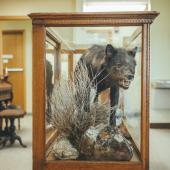
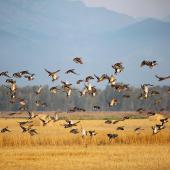


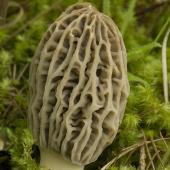
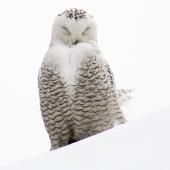

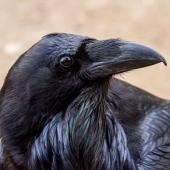
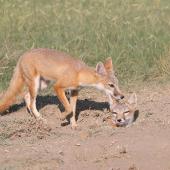
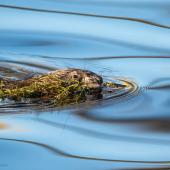

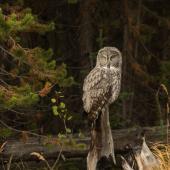
Leave a Comment Here